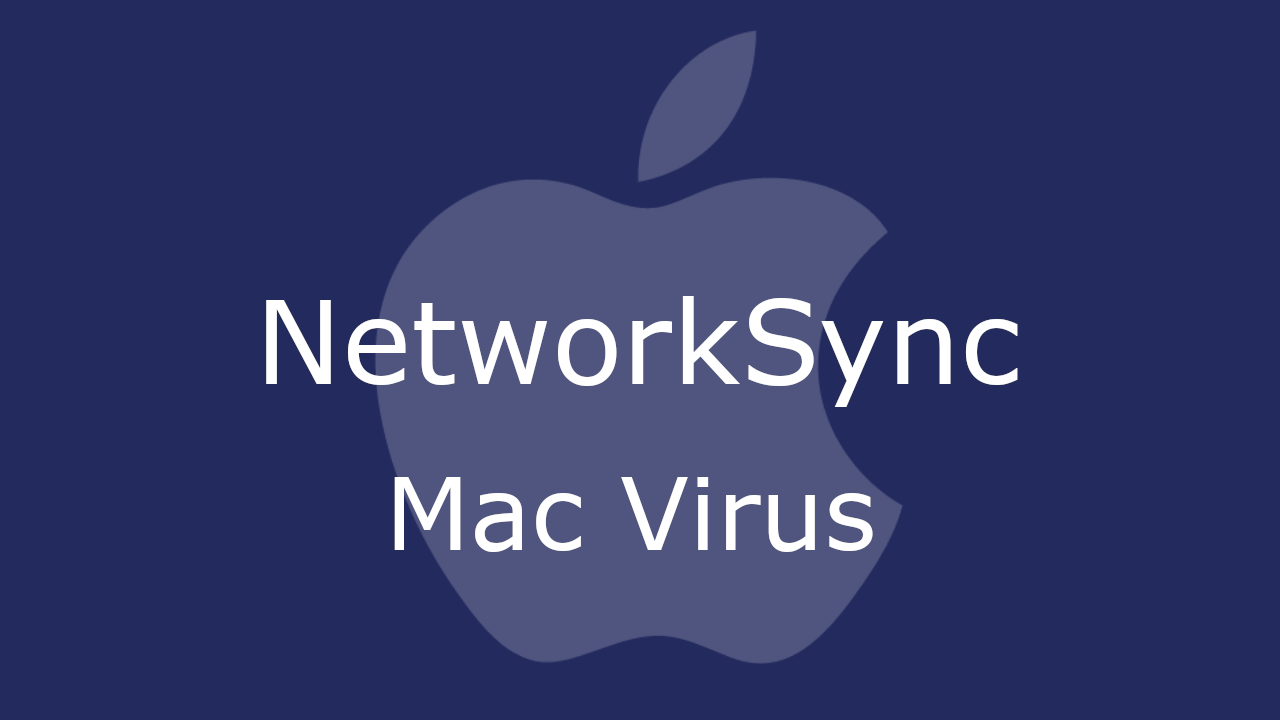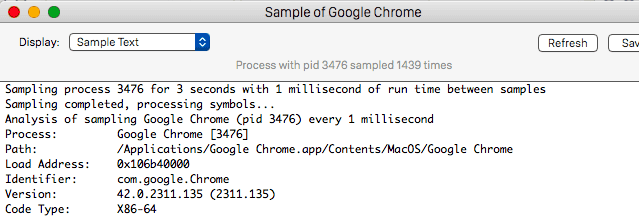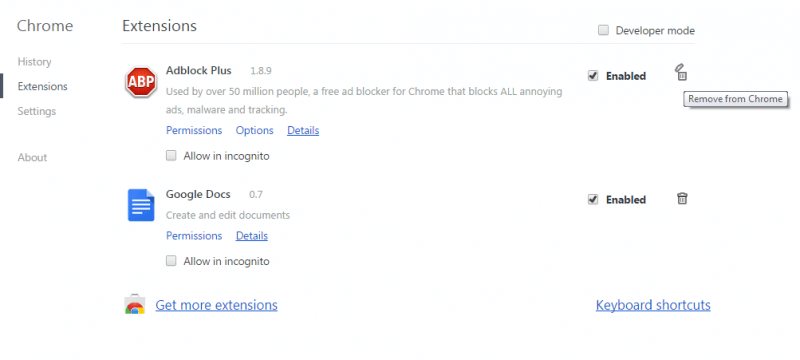Network Sync
Network Sync is an obtrusive app of the browser hijacker family that will install a new search engine in your browser and alter the default homepage address. The main goal of Network Sync is to improve the traffic of certain sites by redirecting users to them.

The Network Sync app may lead to a number of security issues on Mac
The presence of a hijacker in your Mac browser will certainly frustrate you because this piece of software won’t stop trying to get you to visit the sites of its partners by constantly getting you redirected to them until it is removed. In addition to that, the new elements that it has added to the browser will usually not help improve your browsing experience in any way – their main purpose is to push the agenda of the hijacker. And they usually do not provide the end-user with any actual functional features. The effects of a hijacker can be felt on Chrome, Safari, Firefox, and other browsers because most hijackers aren’t limited to a single browser in terms of compatibility. This means that it is irrelevant what browser you use – a hijacker could get to it and mess with its settings and the only way to deal with such an issue is to uninstall the invasive app.
Network Sync for Mac
Network Sync for Mac is a malware app that invades the browsers of Mac systems and forces them to open new tabs and redirect the user to advertising sites. Network Sync for Mac gets distributed mostly via file bundles and spam letters.
If you have this hijacker in your Mac, then you have most likely recently installed some low-quality piece of software on the computer that had had the unwanted app added to it. For example, a lot of hijackers get distributed alongside sham optimization software for Mac. It is no secret that a lot of applications that are promoted as system optimization tools for Mac systems are actually low-quality software designed to scam the user and get them to buy something they don’t really need. Oftentimes, such applications are also used as carriers for browser hijackers.
What is Network Sync?
Network Sync is an unwanted form of software belonging to the browser hijacker category. Network Sync is labeled as a hijacker because it can make changes in the targeted browser without asking for user permission and because it can also automatically redirect the user to questionable sites.
Aside from being quite irritating, this app may also lead to a number of security issues. For example, some of the sites it may get you redirected to could be filled with malware such as Trojans, Spyware, Ransomware or they could be disguised phishing pages aimed at acquiring some personal data about you.
The NetworkSync app
The NetworkSync app is a potentially unwanted app of the browser hijacker category that installs in Mac browsers and messes with their settings. The aim of the NetworkSync app is to provide certain sites with a traffic boost by getting more users redirected to them.
One of the easiest and most effective ways to uninstall this invasive app and to remove its changes from your browser is to follow the instructions from below and to use the recommended removal tool linked there.
SUMMARY:
| Name | Network Sync |
| Type | Browser Hijacker |
| Danger Level | Medium (nowhere near threats like Ransomware, but still a security risk) |
| Symptoms | If a hijacker latches onto your browser, you will likely start seeing browser changes and experiencing sudden page redirects. |
| Distribution Method | Most Mac hijackers are added to the installers of other apps and get distributed this way. |
| Detection Tool |
Remove Network Sync Virus from Mac
![]()
The first thing you need to do is to Quit Safari (if it is opened). If you have trouble closing it normally, you may need to Force Quit Safari:
You can choose the Apple menu and click on Force Quit.
Alternatively you can simultaneously press ⌘ (the Command key situated next to the space bar), Option (the key right next to it) and Escape (the key located at the upper left corner of your keyboard).
If you have done it right a dialog box titled Force Quit Applications will open up.
In this new dialog window select Safari, then press the Force Quit button, then confirm with Force Quit again.
Close the dialog box/window.
![]()
WARNING! READ CAREFULLY BEFORE PROCEEDING!
Start Activity Monitor by opening up Finder, then proceed to ![]()
Once there, look at all the processes: if you believe any of them are hijacking your results, or are part of the problem, highlight the process with your mouse, then click the “i” button at the top. This will open up the following box:

Now click on Sample at the bottom:

Do this for all processes you believe are part of the threat, and run any suspicious files in our online virus scanner, then delete the malicious files:

![]()
The next step is to safely launch Safari again. Press and hold the Shift key while relaunching Safari. This will prevent Safari’s previously opened pages from loading again. Once Safari is opened up, you can release the Shift key.
On the off chance that you are still having trouble with scripts interrupting the closing of unwanted pages in Safari, you may need to take some additional measures.
First, Force Quit Safari again.
Now if you are using a Wi-Fi connection turn it off by selecting Wi-Fi off in you Mac’s Menu. If you are using a cable internet (Ethernet connection), disconnect the Ethernet cable.
![]()
Re-Launch Safari but don’t forget to press and hold the Shift button while doing it, so no previous pages can be opened up. Now, Click on Preferences in the Safari menu,

and then again on the Extensions tab,

Select and Uninstall any extensions that you don’t recognize by clicking on the Uninstall button. If you are not sure and don’t want to take any risks you can safely uninstall all extensions, none are required for normal system operation.
![]()
The threat has likely infected all of your browsers. The instructions below need to be applied for all browsers you are using.
Again select Preferences in the Safari Menu, but this time click on the Privacy tab,

Now click on Remove All Website Data, confirm with Remove Now. Keep in mind that after you do this all stored website data will be deleted. You will need to sign-in again for all websites that require any form of authentication.
Still in the Preferences menu, hit the General tab

Check if your Homepage is the one you have selected, if not change it to whatever you prefer.

Select the History menu this time, and click on Clear History. This way you will prevent accidentally opening a problematic web page again.
![]() How to Remove Network Sync From Firefox in OSX:
How to Remove Network Sync From Firefox in OSX:
Open Firefox, click on ![]() (top right) ——-> Add-ons. Hit Extensions next.
(top right) ——-> Add-ons. Hit Extensions next.

The problem should be lurking somewhere around here – Remove it. Then Refresh Your Firefox Settings.
![]() How to Remove NetworkSync From Chrome in OSX:
How to Remove NetworkSync From Chrome in OSX:
Start Chrome, click ![]() —–>More Tools —–> Extensions. There, find the malware and select
—–>More Tools —–> Extensions. There, find the malware and select ![]() .
.

Click ![]() again, and proceed to Settings —> Search, the fourth tab, select Manage Search Engines. Delete everything but the search engines you normally use. After that Reset Your Chrome Settings.
again, and proceed to Settings —> Search, the fourth tab, select Manage Search Engines. Delete everything but the search engines you normally use. After that Reset Your Chrome Settings.
If the guide doesn’t help, download the anti-virus program we recommended or try our free online virus scanner. Also, you can always ask us in the comments for help!

Leave a Comment